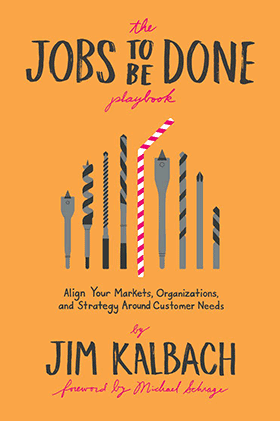Business: Innovation
UXmatters has published 21 articles on the topic Innovation.
Top 3 Trending Articles on Innovation
-
Book Excerpt: The Jobs to Be Done Playbook
May 18, 20201 CommentThis is an excerpt from Chapter 4 of Jim Kalbach’s new book The Jobs to Be Done Playbook: Align Your Markets, Organization, and Strategy Around Customer Needs. ©2020, Rosenfeld Media.
Chapter 4: Defining Value
 In this chapter, you will learn about these plays:
In this chapter, you will learn about these plays:- How to find unmet needs
- How to create goal-based personas
- A new way to compare competing solutions
- How to define a value proposition
The product marketing manager at a company I once worked for stood up in a meeting to present his strategy. He proceeded to describe the top customer needs that we should support with our solutions. I was thrilled to see him align to a customer-centric model. Read More
-
Empathy Is the Key to Innovation
June 3, 2019Much has been written on the difference between innovation and invention. This makes some sense because it seems every company in the world, big or small, is striving for an innovative approach to solving existing problems. However, there is mass confusion about what innovation actually is—especially in the enterprise-software space.
It seems that every consultancy is frothing at the mouth to win the very lucrative opportunities to help organizations solve their digital-transformation problems. And they’re employing our experience-design playbook to do this.
How? In a word: empathy. Hearing and reading about all the latest approaches in technology and sales, empathy is the best new thing—the secret skill that can enable us to reach dizzying, new heights. Empathy could solve world hunger and make us all better people. But the fact that empathy does actually make us better people is lost on most. Empathy can help us innovate more quickly and, ultimately, sell more products, satisfy more customers, and generate greater revenues. Read More
In Innovation | Soft Skills -
The Role of Constraints in Design Innovation
May 31, 2016In differentiating an organization’s products from those of its competitors, design innovation is just as important as technology innovation. Both are vital to the continued success of an organization’s products in the marketplace. Successful innovation requires more than just generating a lot of creative ideas. It’s about execution—actually bringing products to market that embody innovative design solutions and deliver business impact.
What is the role of constraints in design innovation? In this article, I’ll discuss three types of constraints: technical constraints, business constraints, and design constraints. According to Charles Eames:
“Design depends largely on constraints. … Here is one of the few effective keys to the design problem—the ability of the designer to recognize as many of the constraints as possible—his willingness and enthusiasm for working within these constraints….” Read More
Columns on Innovation
-
Ask UXmatters
Get expert answers
A column by Janet M. Six -
On Good Behavior
The essentials of interaction design
A column by Pabini Gabriel-Petit
All Articles on Innovation
- What Is a Normal Level of Innovation Risk?
- Citizen Developers as Innovators
- Hibernation and Innovation
- Book Review: The Innovation Stack
- Book Excerpt: The Jobs to Be Done Playbook
- Prototyping User Experiences: Reducing the Risks of Product Innovation
- Book Review: Innovation by Design
- Delivering Innovation
- Empathy Is the Key to Innovation
- Book Review: Think Like a Futurist
- 7 Questions to Ask Users Early in the Product Lifecycle
- Book Review: Creative Change
- Humanizing the Enterprise
- Encouraging Innovation: Drug Discovery and Clinical Trials
- The Conundrum of Humdrum Innovation
- The Role of Constraints in Design Innovation
- UX Strategy: How to Devise Innovative Digital Products That People Want, Part 2
- Innovation with Intention: The Next Evolution for the Experience Designer
- Fostering Innovation and Creativity | Project Scoping
- Effective UX in a Corporate Environment: Part II
- Experiencing CHI 2006: From a Practitioner’s Viewpoint: Part I